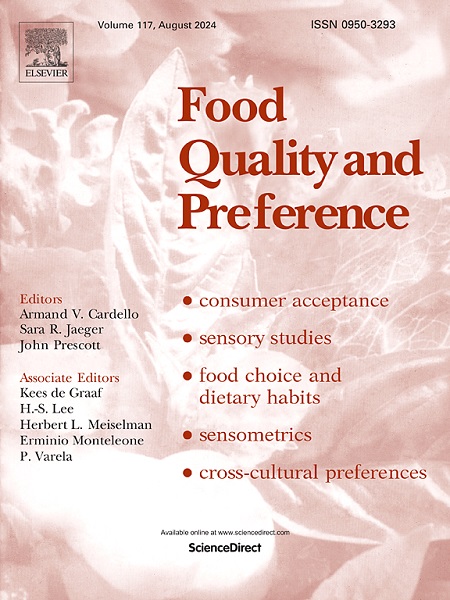Consumer preferences for seafood sustainability attributes: A comparative study of 12 markets
IF 4.9
1区 农林科学
Q1 FOOD SCIENCE & TECHNOLOGY
引用次数: 0
Abstract
Seafood consumers are increasingly becoming aware of products with sustainability attributes, such as low greenhouse gas emissions, animal health/welfare, and work conditions in the fishery/aquaculture sector. However, it is unclear how consumers rank these attributes in their purchase decisions compared to conventional attributes such as price, product appearance, food safety, and taste. There is also limited information available about how consumers' preferences vary across countries. This study aimed to examine consumer preferences for key sustainable and conventional seafood attributes across 12 markets. The best-worst scaling method was applied to an online survey design (N = 12,222), which was conducted between November 2023 to February 2024 in Australia, China, Hong Kong, India, Indonesia, Japan, New Zealand, Singapore, South Korea, Taiwan, USA, and Vietnam. The results suggest that, for all markets, food safety and taste were ranked as the most important attributes, followed by sustainability attributes such as seafood with healthy fish populations, compliance with regulations, and limited pollution. Social/ethical seafood attributes such as work conditions, animal health/welfare, and community engagement ranked among the least important across all markets. A latent class analysis identified four consumer segments across the 12 markets in relation to preferences for seafood attributes: the ‘sustainability-interested’, ‘indecisive’, ‘origin-focused’, and ‘traditional’ consumers. The findings from this study can help seafood suppliers better understand the current market for sustainability seafood attributes as a foundation for targeted promotion of their seafood products to specific consumer groups and markets.
消费者对海鲜可持续性属性的偏好:12个市场的比较研究
海鲜消费者越来越意识到具有可持续性属性的产品,例如低温室气体排放、动物健康/福利以及渔业/水产养殖部门的工作条件。然而,与价格、产品外观、食品安全和口味等传统属性相比,消费者在购买决策中如何对这些属性进行排名尚不清楚。关于不同国家消费者的偏好如何不同的信息也有限。本研究旨在调查12个市场的消费者对主要可持续和传统海鲜属性的偏好。最佳-最差量表法应用于一项在线调查设计(N = 12,222),该调查于2023年11月至2024年2月在澳大利亚、中国、香港、印度、印度尼西亚、日本、新西兰、新加坡、韩国、台湾、美国和越南进行。结果表明,在所有市场中,食品安全和口味被列为最重要的属性,其次是可持续性属性,如拥有健康鱼类种群的海鲜、遵守法规和污染有限。海产品的社会/道德属性,如工作条件、动物健康/福利和社区参与,在所有市场中都是最不重要的。一项潜在阶层分析确定了12个市场中与海鲜属性偏好相关的四个消费者群体:“对可持续性感兴趣”、“优柔寡断”、“以原产地为中心”和“传统”消费者。本研究的结果可以帮助海鲜供应商更好地了解当前市场对可持续性海鲜的属性,作为有针对性地向特定消费群体和市场推广其海鲜产品的基础。
本文章由计算机程序翻译,如有差异,请以英文原文为准。
求助全文
约1分钟内获得全文
求助全文
来源期刊

Food Quality and Preference
工程技术-食品科技
CiteScore
10.40
自引率
15.10%
发文量
263
审稿时长
38 days
期刊介绍:
Food Quality and Preference is a journal devoted to sensory, consumer and behavioural research in food and non-food products. It publishes original research, critical reviews, and short communications in sensory and consumer science, and sensometrics. In addition, the journal publishes special invited issues on important timely topics and from relevant conferences. These are aimed at bridging the gap between research and application, bringing together authors and readers in consumer and market research, sensory science, sensometrics and sensory evaluation, nutrition and food choice, as well as food research, product development and sensory quality assurance. Submissions to Food Quality and Preference are limited to papers that include some form of human measurement; papers that are limited to physical/chemical measures or the routine application of sensory, consumer or econometric analysis will not be considered unless they specifically make a novel scientific contribution in line with the journal''s coverage as outlined below.
 求助内容:
求助内容: 应助结果提醒方式:
应助结果提醒方式:


